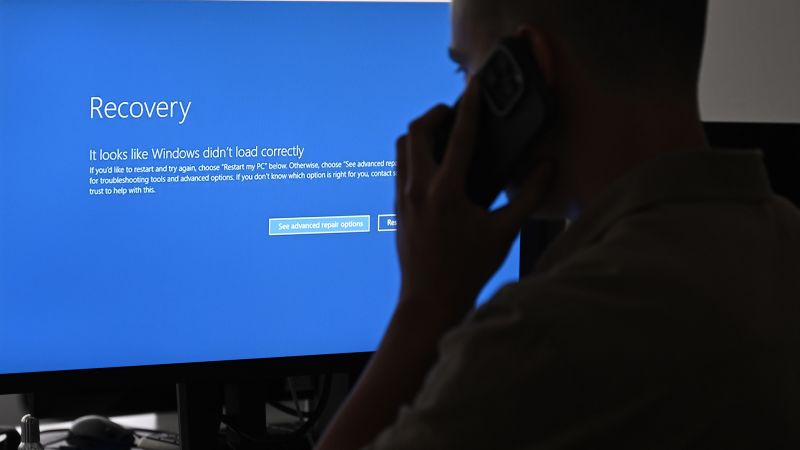The infamous “blue screen of death,” a term that has struck fear into the hearts of users throughout the history of Windows operating systems, is soon to become a relic of the past. Microsoft, in an announcement that many will surely deem monumental, revealed plans to eliminate this notorious feature, which has caused frustration for countless individuals for decades. The tech giant is updating the user interface associated with unexpected system restarts and streamlining the experience for its users by introducing a new black-colored screen. This change was officially announced on the company’s dedicated blog.
In an effort to modernize the user experience, Microsoft stated that the “simplified” screen will be rolled out later this summer to all devices running Windows 11 utilizing the 24H2 operating software update. The new design is engineered to enhance the efficiency of the restart process, promising to reduce reboot times to approximately two seconds for the majority of users. This is a significant advancement over the previous iterations, highlighting Microsoft’s commitment to improving user experience and reducing downtime associated with system errors.
The legacy of the dreaded “blue screen of death” dates back to the early 1990s. It all began with the introductory version, dubbed the “blue screen of unhappiness,” on Windows 3.1. It was during this era that the infamous Ctrl-Alt-Delete shortcut was introduced, allowing users to force quit unresponsive programs. The dialogue reflecting this situation was famously crafted by former Microsoft CEO Steve Ballmer, setting the tone for a host of user frustrations that would soon be encapsulated in the blue screen experience.
As noted by Raymond Chen, a Microsoft employee with extensive knowledge of the company’s history, the definitive version of the “blue screen of death” officially launched in 1993 on the Windows NT system. This version indicated when “the system is unrecoverably dead at this point,” a moment dreaded by users across various sectors. Such technical failures contributed to a narrative that the existence of the blue screen was synonymous with impending doom for users who depended on Windows machines for critical tasks.
Interestingly, there have been efforts to innovate how Windows alerts its users since the introduction of the blue screen. In 2021, Microsoft had already begun implementing a version of the black screen for Windows 11 users. This roll-out corresponded with a variety of updates and improvements to the dialogue that accompanies system errors. Thus, the latest transition to a fully black screen signifies yet another step forward in evolving how Microsoft interacts with users during critical system events.
The blue screen phenomena were particularly pronounced last July when a massive outage fueled by the cybersecurity firm CrowdStrike wreaked havoc across the globe, affecting countless technology systems. During this incident, Windows-operated machines prominently displayed the infamous blue screen, invoking anxiety among users who relied heavily on their devices for both personal and professional use.
Ultimately, the decision to bid farewell to the notorious blue screen represents a broader trend in the tech world toward more user-friendly interfaces and quicker recovery processes. This shift speaks volumes about Microsoft’s dedication to enhancing user satisfaction and providing timely solutions to common issues. By retiring the blue screen and adopting a new interface, Microsoft is responding positively to user feedback and is thus paving the way for a more seamless and efficient operation within its ecosystem. The transition marks a significant milestone in the evolution of Windows, promising a new chapter devoid of the past frustrations associated with system failures. The end of the blue screen is not merely a cosmetic change; it symbolizes a conscious effort to redefine the user experience in the digital age.











